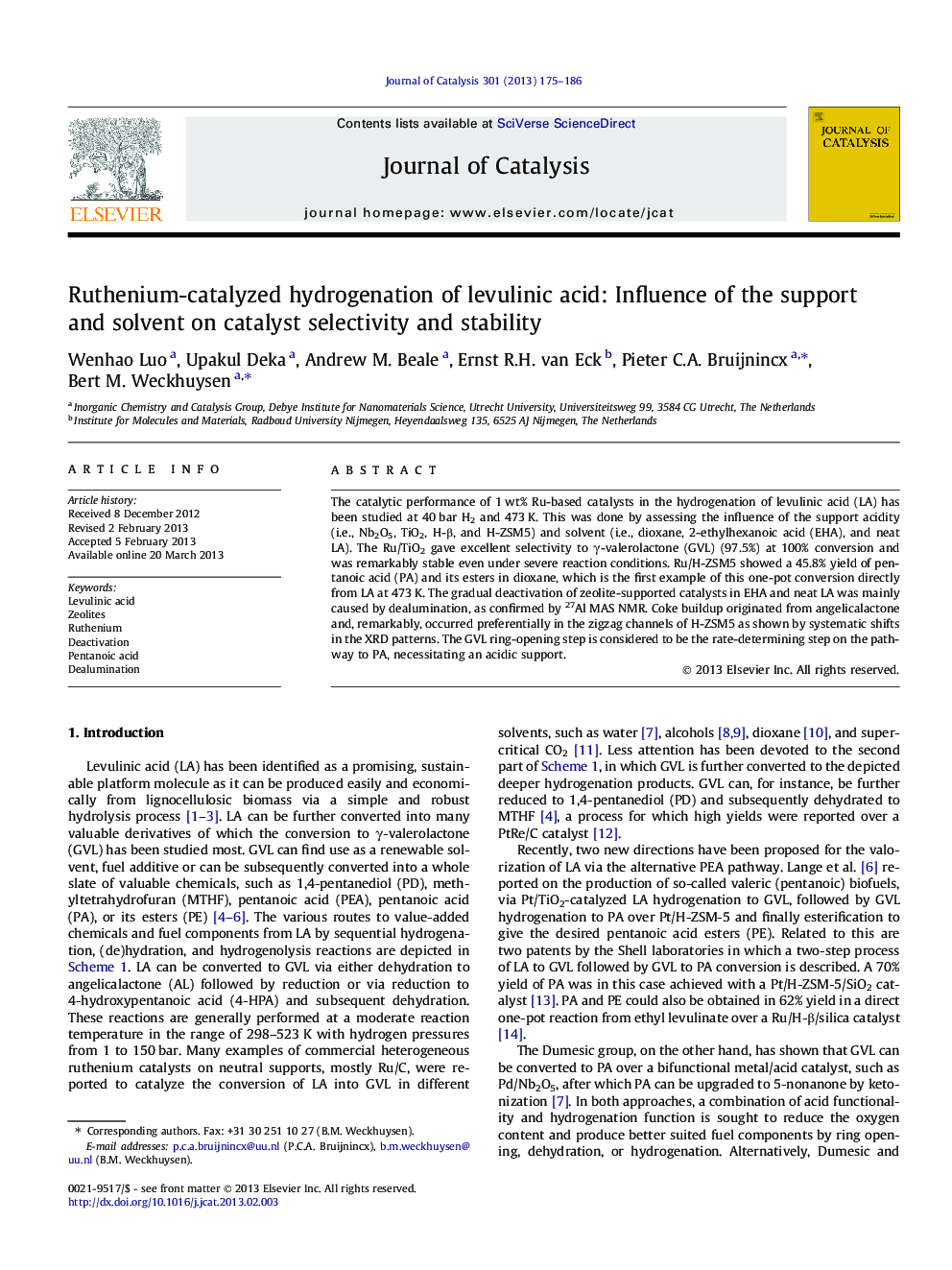| کد مقاله | کد نشریه | سال انتشار | مقاله انگلیسی | نسخه تمام متن |
|---|---|---|---|---|
| 61292 | 47574 | 2013 | 12 صفحه PDF | دانلود رایگان |

The catalytic performance of 1 wt% Ru-based catalysts in the hydrogenation of levulinic acid (LA) has been studied at 40 bar H2 and 473 K. This was done by assessing the influence of the support acidity (i.e., Nb2O5, TiO2, H-β, and H-ZSM5) and solvent (i.e., dioxane, 2-ethylhexanoic acid (EHA), and neat LA). The Ru/TiO2 gave excellent selectivity to γ-valerolactone (GVL) (97.5%) at 100% conversion and was remarkably stable even under severe reaction conditions. Ru/H-ZSM5 showed a 45.8% yield of pentanoic acid (PA) and its esters in dioxane, which is the first example of this one-pot conversion directly from LA at 473 K. The gradual deactivation of zeolite-supported catalysts in EHA and neat LA was mainly caused by dealumination, as confirmed by 27Al MAS NMR. Coke buildup originated from angelicalactone and, remarkably, occurred preferentially in the zigzag channels of H-ZSM5 as shown by systematic shifts in the XRD patterns. The GVL ring-opening step is considered to be the rate-determining step on the pathway to PA, necessitating an acidic support.
Selectivity in Ru-catalyzed levulinic acid (LA) hydrogenation depends strongly on support type. Ru/TiO2 is highly selective for γ-valerolactone and very stable even in neat LA, while zeolite-supported catalysts give pentanoic acid in 45.8% yield in a one-pot conversion. Dealumination causes gradual deactivation.Figure optionsDownload high-quality image (103 K)Download as PowerPoint slideHighlights
► A direct, one-pot conversion of levulinic acid to pentanoic acid with zeolite-supported Ru catalysts.
► Ru/TiO2 shows excellent selectivity to GVL and remarkable stability.
► Support dealumination is mainly responsible for gradual catalyst deactivation.
► Coke buildup in H-ZSM5 is found to occur preferentially in the zigzag channels.
Journal: Journal of Catalysis - Volume 301, May 2013, Pages 175–186